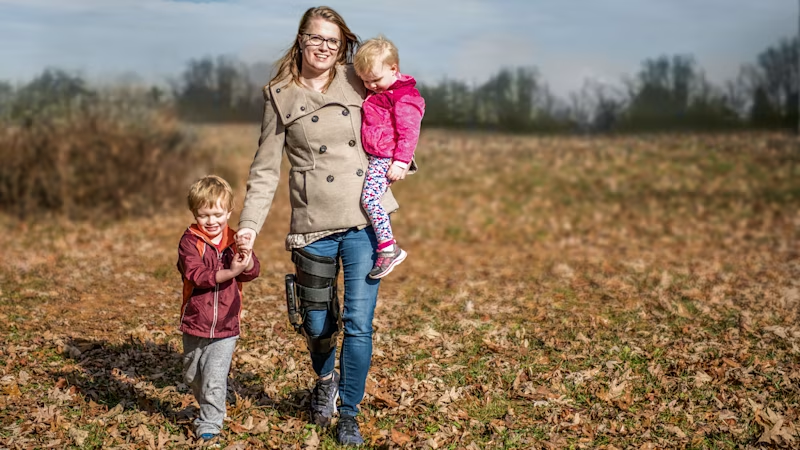Polio/post-polio
Polio is an infectious disease caused by the polio virus. The polio virus primarily affects the central nervous system (brain and/or spinal cord). Paralysis occurs with 0.1% of all infections.
Causes
The infection is caused by the consumption of infected foods. The virus thus enters the mouth and pharynx and spreads from here to the intestinal tract, where it multiplies and is ultimately excreted with the stools.
The incubation period (time from infection to the onset of the disease) is about six to ten days. If the infection stops at this stage, this is known as asymptomatic or abortive polio. This is the case in about 4% to 8% of those infected.
Symptoms
The early stage of the disease manifests itself in mild, non-specific symptoms that may also occur with other virus infections: malaise, headaches, fever and possibly diarrhoea. With about 1% of all polio infections, the virus breaches the barrier of the intestinal tract and infects the spinal cord and brain via the bloodstream. This also leads to a non-paralytic form of polio that is manifested by headaches as well as neck and back pain. Only in about 0.1% of all infections does the virus attack the nerve cells of the spinal cord and/or brain directly. This is the paralytic form because paralysis occurs in this case.
Symptoms of long-term consequences of polio/post-polio syndrome are:
A general lack of strength and endurance
Extreme fatigue
Difficulty breathing and swallowing
Intolerance to cold temperatures
Pain in the muscles and/or joints
Increased muscle weakness/muscle pain
Muscle atrophy (amyotrophia)
Progressively unstable joints/joint deformities
Cramps
Muscle convulsions (fasciculations)
Changes in the gait pattern and/or increased tendency to fall
Therapy
Since no specific antiviral therapy is available, treatment is limited to symptomatic measures. These include bed rest with careful nursing, correct positioning and physical therapy. Aftercare includes appropriate physiotherapy and treatment with orthopedic devices such as orthoses. This can improve mobility after the acute stage of the disease.
Back to everyday activities: three steps to an Ottobock orthosis
- Here you’ll find an overview of all the orthoses and supports that could potentially help you. Take the list with you to your next doctor’s appointment.
- Talk to your doctor about which orthosis is best suited to your symptoms and condition. Your doctor can then write you a prescription for the appropriate orthosis.
- Take your prescription to a medical supply company. They’ll give you your new orthosis and adjust it to fit your exact body measurements.


